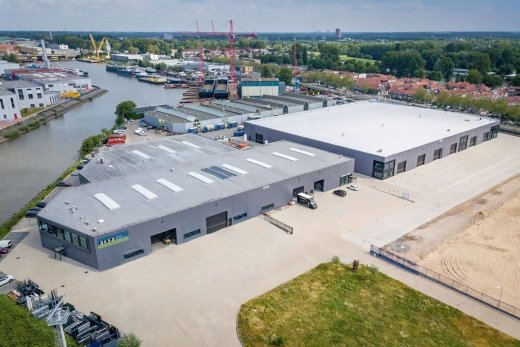Choosing the right generator for a large-scale industrial facility is a decision that carries both technical and strategic weight. It’s not just about meeting power demands, it’s about ensuring long-term operational continuity, safety compliance, and cost-efficiency. For facility managers, procurement officers, and engineering firms, investing in the correct generator system is critical to minimizing downtime, protecting infrastructure, and complying with modern European environmental regulations.
This guide walks you through the essential considerations when selecting an industrial generator from calculating power requirements and fuel choices to understanding compliance obligations and assessing site-specific needs. Whether you’re operating a manufacturing plant, logistics hub, data center, mining site, oil & gas facility, or wastewater treatment plant, these insights will help you make an informed decision tailored to your operational goals
Why Generator Selection Is Critical for Industrial Facilities
Industrial facilities operate in environments where power disruptions can have immediate and severe consequences. Production lines may halt, automated systems can fail, raw materials can be wasted, and sensitive equipment may suffer irreversible damage. In some sectors such as healthcare, data centers, mining, or water treatment – power loss isn’t just costly; it can be dangerous or even life-threatening.
Beyond the immediate effects of downtime, there are longer-term considerations. Generators that are not properly sized or specified can lead to overloading, excessive fuel consumption, regulatory non-compliance, and increased wear and tear. These issues compound over time, impacting not only operational reliability but also budgeting and risk management.
Thus, selecting the right generator is not just an engineering challenge, it’s a key component of strategic facility planning.
Understanding Your Facility’s Power Demand
The starting point for choosing a generator is conducting a comprehensive load analysis. This analysis should take into account the types of equipment operating on-site, the total energy consumption during normal operations, and the power demands during startup or peak load periods.
Most industrial facilities experience variable loads throughout the day. Machines like compressors, chillers, or conveyor systems often require a high surge of energy during startup. A properly selected generator must be able to handle both the average running load and these surge loads without stress.
Load types can be broadly classified as:
- Resistive loads: Lighting or heating systems.
- Inductive loads: Motors, pumps, compressors (can need 2–6x their rated power at startup).
- Non-linear loads: Computers, drives, LED lighting (require harmonic distortion management).
Professional facilities typically conduct a detailed power audit before specifying their generator to ensure that sizing accommodates not only current operations but also anticipated expansions.
Generator Sizing: Avoiding Overload and Inefficiency
Oversized generators can lead to fuel waste and inefficient operation, while undersized generators may result in overloads and premature failure. Both scenarios create avoidable operational risks.
The sizing process should include:
- Peak load: The highest level of power the facility draws.
- Running load: Average operational demand.
- Load factor: Reflects how intensively the generator is used.
As a general rule, it’s advisable to add a 10–20% margin to your peak load estimate. This buffer helps accommodate future load increases or unknown surges without compromising generator performance.
For mission-critical environments, sizing may also include redundancy planning (e.g., N+1 configurations) to ensure uninterrupted operations.
Power Application: Standby, Prime, or Continuous?
Not all generator use cases are the same. Understanding your application type is key to selecting the right generator class:
- Standby generators: Backup for outages.
- Prime power generators: Regular use, 8–12 hours per day.
- Continuous power generators: Designed for 24/7 operation at a consistent load level.
For large-scale industries such as mining operations, oil & gas fields, and manufacturing plants, continuous power is often the most reliable solution. In these contexts, Stage V continuous power generators are particularly valuable – they combine uninterrupted performance with compliance to the strictest EU emission standards.
Choosing the Right Fuel Type
Fuel choice impacts not just running costs, but also environmental compliance and serviceability. The most common options for industrial generators are:
- Diesel: Still the most widely used for industrial-scale backup and continuous systems. Diesel generators for manufacturing plants, logistics facilities, and wastewater treatment sites remain the gold standard for efficiency and output.
- Natural Gas: Cleaner burning, but pipeline dependent.
- Hybrid Systems: Diesel or gas engines combined with batteries or renewables.
- HVO (Hydrotreated Vegetable Oil): A renewable fuel option increasingly adopted in Europe. HVO reduces CO₂ emissions and particulates significantly. Power Genset NL generators are fully HVO compliant, making them a future-proof investment for facilities looking to combine reliability with sustainability.
In many European regions, there is a growing emphasis on Stage V diesel engines, which provide significantly lower emissions. For companies balancing sustainability goals with heavy-duty requirements, Stage V + HVO is a powerful combination.
Compliance with European Emissions and Safety Standards
The European Union’s Stage V regulation places strict emission limits on non-road mobile machinery, including generators. For industrial facilities, this means older, non-compliant models may soon be restricted from new projects or government tenders.
Selecting a generator that meets Stage V standards ensures not only legal compliance but also eligibility for funding opportunities. It also helps future-proof your investment.
Power Genset NL offers a full range of Stage V-certified, HVO-compliant diesel generators tailored to industries such as construction, mining, oil & gas, logistics, data centers, and municipal infrastructure.
Installation Conditions: Weather, Ventilation, and Space
Generators must be selected and installed with site-specific conditions in mind, such as:
- Ambient temperature and humidity
- Altitude impact on engine performance
- Ventilation and exhaust design
- Noise restrictions in urban zones
- Space limitations (containerized setups, rooftops, underground facilities)
Power Genset NL provides engineering support for custom enclosures, skid mounts, and soundproofing to ensure installations meet both technical and regulatory requirements.
Maintenance and Monitoring
Reliable operation depends on regular maintenance and monitoring. Look for systems that include:
- Preventive maintenance contracts
- Remote diagnostics
- Spare parts availability
- Real-time monitoring dashboards
By proactively managing your generator, you extend its service life—often 15,000–30,000 hours depending on usage and care.
Final Thoughts: Make the Right Choice, Not the Easy One
Large-scale generator purchases should be treated as strategic infrastructure investments. By evaluating your power needs, Stage V compliance, HVO fuel options, and industry-specific demands, you can ensure your facility remains resilient and future-ready.
Need Help Choosing the Right Solution?
Power Genset NL works with municipalities, engineering firms, and contractors to deliver backup power systems designed specifically for critical infrastructure like wastewater treatment, manufacturing, and logistics.
From EU Stage V-certified and HVO-compliant generators to remote monitoring tools, turnkey installation, and aftersales support, we help you maintain operational continuity under all conditions.
Contact us today at sales@powergenset.nl or explore our generator solutions to learn how we can support your facility’s long-term resilience.

